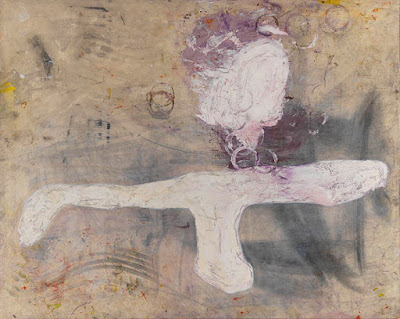The sparks fly at Cat Balco's solo show My Exploding Stars at Rick Wester Fine Art in New York through January 25, 2020.
Cat is a fellow writer for Art New England, which is how we met. She makes large, dynamic geometric abstractions that envelop the viewer in color so vibrant and electric you can practically sun bathe in it.
Foregrounding process and the basic elements of visual art, My Exploding Stars feels like an ode to painting itself. The palette emphasizes primary colors, giving the work a stripped down, modernistic, Pop Art-like vibe.
Yet the paintings lean in strongly toward abstract expressionism, because the material is very much allowed to act like paint. For example, the artist creates a sense of dynamic motion by turning the paintings as they dry to allow drips to reach in contrary directions.
Cat's brushstrokes are bold, declarative, strongly directional, and GIANT - she painted this work with a long-handled broom, which the gallery is displaying alongside the paintings. As a technique, this isn't new, but for the artist it's a reference to working class roots.
The paintings are gorgeous, vibrant, and feel very alive. For anyone who loves painting, My Exploding Stars should be a welcome celebration of color and light.



















































































